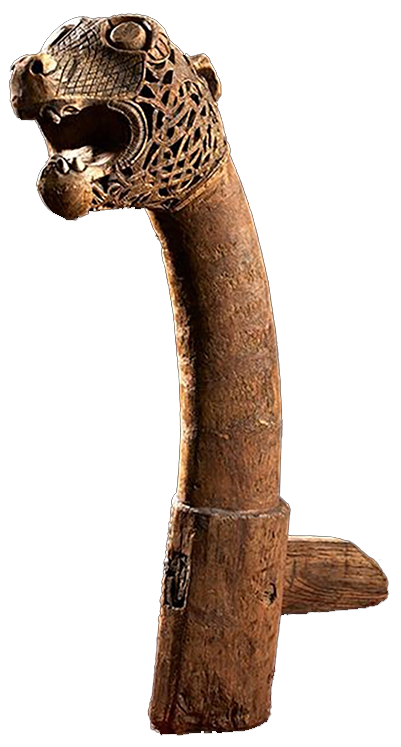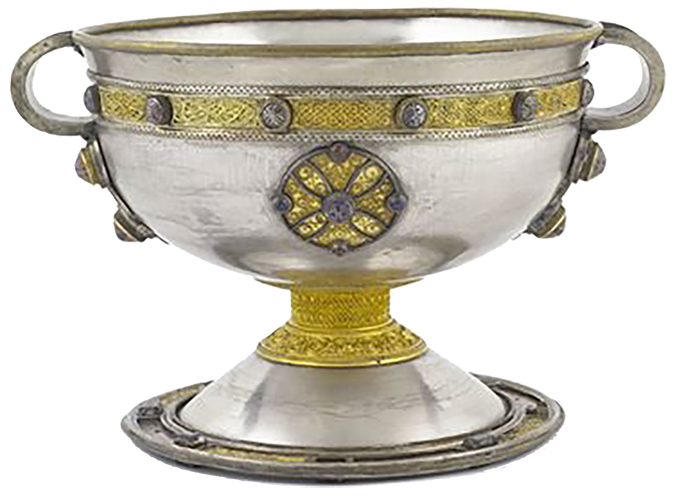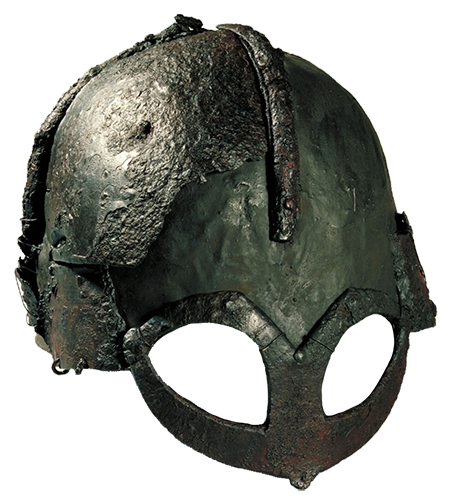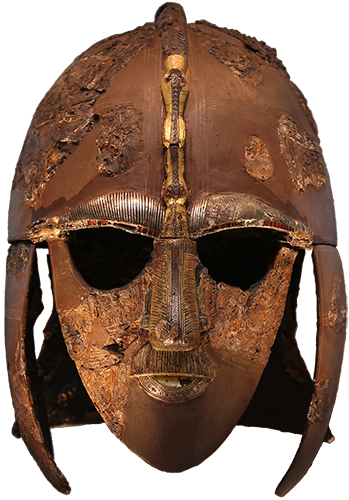
In the sagas there are descriptions about some beings, although we are hardly able to find their trace today. Perhaps the most exciting of them are the Jötnar. They are mythical, their knowledge is mystical, their creation myth is surprisingly material. The Jötnar live in Jötunheim (“home of the Jötnar”), otherwise known as Útgarðr, one of the worlds that rests upon the world tree. The word Útgarðr means, both literally and figuratively, “outside the partition”. Within the partition, one finds the familiar, regulated, civilised world, known as Innangarðr, which includes both Ásgarðr, the world of the (Æsir) gods, and Midgarðr, the world of humans. What lies outside the partition is the wild, unfamiliar, unordered world – Chaos. The gods and the Jötnar must work together if they wish to keep the forces of the civilised world in balance with those of Chaos.

The Jötnar, who surround the civilised world, endeavour to drag that world back into the state of chaos – to swallow it, as it were – and indeed the word Jötun derives from the same root as the Old Germanic etunaz, meaning “swallower” or “consumer”. The word Jötun is generally translated “giant” both in the stories, and in the professional literature, a solution that is misleading.

In English, the word “giant” is applied to a person who is much larger or stronger than a normal human. In the sagas, however, the Jötnar are not generally described as being large. And while many Jötnar are painted as clever, but ugly, we know of two cases where gods took beautiful Jötun maidens as brides. Though the tales do not make them seem particularly friendly, this cannot be construed as implying appreciable size or strength. The name Jötun, therefore, should be seen as designating a separate race that is neither god, nor human, nor Álfr, nor Dvergr. The reason for the mistranslation is probably that the name for the giants of the Hebrew Bible – beings of truly gigantic stature – was transmitted from the Greek, French, and English languages into the Old Germanic language, where its meaning was confused with that of the Old Icelandic word Jötun.
The first Jötun, Ymir, was a hermaphrodite. In his Prose Edda, Snorri presents Ymir in the following terms:

Then Þriði said:
While in Niflheim it was cold and all was wild and dark, in nearby Múspell, as we know, it was warm and bright – the Ginnungagap [the Void], however, was as tepid as the motionless air. And as the frost and the warm breath came together, they melted and began dripping liquid droplets, which swelled with the power conveyed by the heat; and from them was formed a human-like figure, called Ymir . . .
On no account do we recognise this being as a god. He is evil, as are all his kin, whom we call the Hrímþursar. They say that once, Ymir fell asleep and began to sweat, and a man and woman grew beneath his left hand, and then one of his legs coupled with the other and spawned a son, and from these are all the rest descended. These are the Hrímþursar, the first of which we call Ymir.
The Ginnungagap is the great chaos or yawning void, where the frozen water meets the heat, and the air is barely warm and does not waver. It is here that the first being, Ymir, came into existence, induced his own fertility, and created the Jötun race. Thus, according to the sagas, the Jötnar were the first beings to live in the world.
Illustration 1: Animal head from the Oseberg Ship
Found within the Oseberg ship were five beautifully carved animal heads, of which four lay in the burial chamber, the rope that bound them together drawn through one of the mouths like a bridle’s bit. This particular head is currently on display at the Viking Ship Museum in Oslo.
The wooden handle attached to the lower portion of the carving in the photograph is about 50 cm long. Though the original use of the heads is unknown, it could be that the handle was inserted into a matching holder, permitting it to be attached to something, such as a wall, ship, or column.
Illustration 2: The Ardagh Chalice
The Ardagh Chalice was discovered in the village of Ardagh in Ireland’s Limerick County. An example of local workmanship, the chalice is made of silver with an exterior decorated in gold, silver, glass, and enamel. The piece dates to the 8th century and is late-Roman in style. One of the greatest treasures of the early Irish church, the chalice was probably used for dispensing the Eucharistic wine during the celebration of mass.
Today, the Ardagh Chalice is on display at the National Museum of Ireland.
Illustration 3: Gjermundbu Viking helmet
Discovered at a Norwegian burial site in 1943, the Gjermundbu helmet is the only piece of its kind known to have survived from the Viking age. The helmet is made of iron and was restored from nine individual fragments. It is thought to have been manufactured around the year 970, possibly on the basis of an earlier helmet.
The Gjermundbu helmet is currently on view at the University of Oslo Museum of Cultural History.
Illustration 4: the Sutton Hoo helmet
Made by an early Anglo-Saxon metalworker in iron, tin, and bronze, the Sutton Hoo helmet consists of a skull cap, cheek guards, a visor, and a neck shield, with an additional nose guard made of gilded copper. The exterior of the helmet features gilded zoomorphic designs, such as the boar heads that adorn the portion above the eyebrows.
Dated to the 7th century, the 2.5 kg helmet was found in a ship burial in East Anglia, Suffolk.
Today, it is on view at the British Museum.